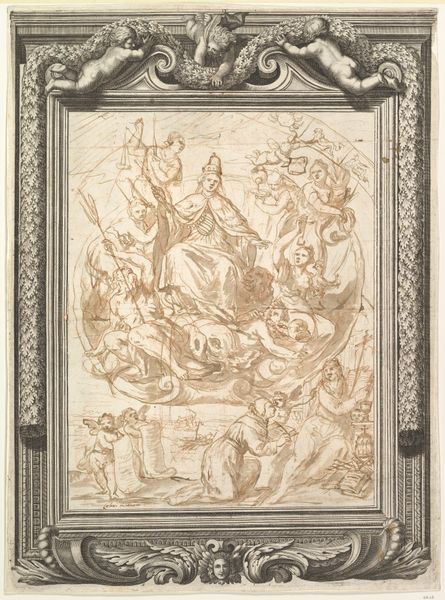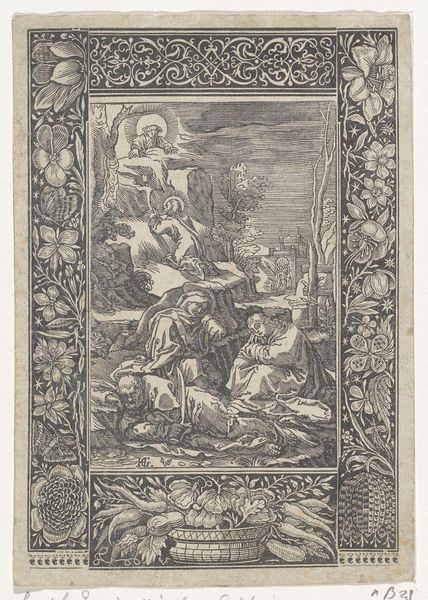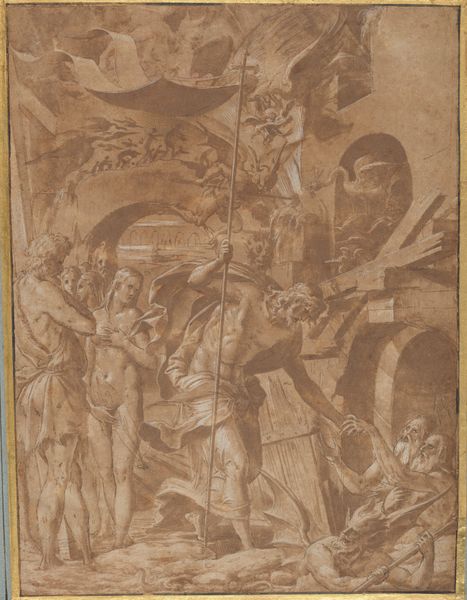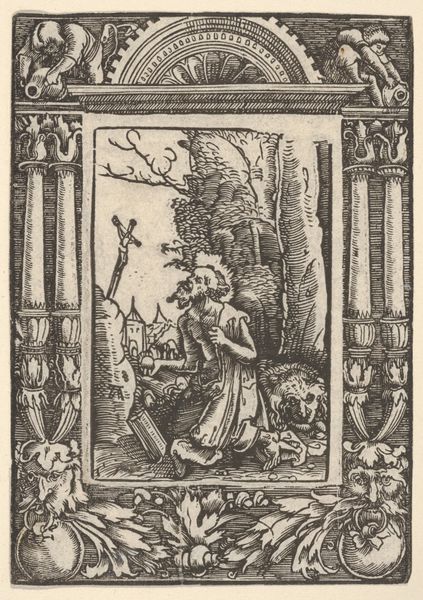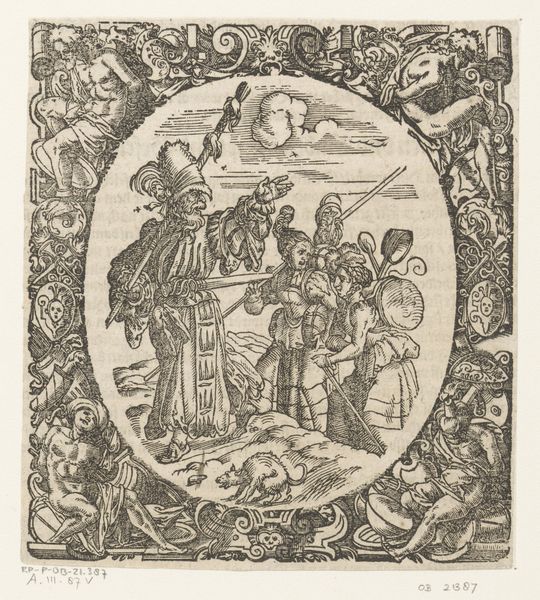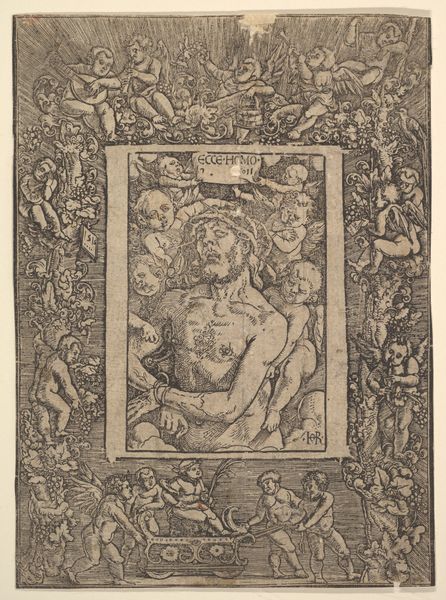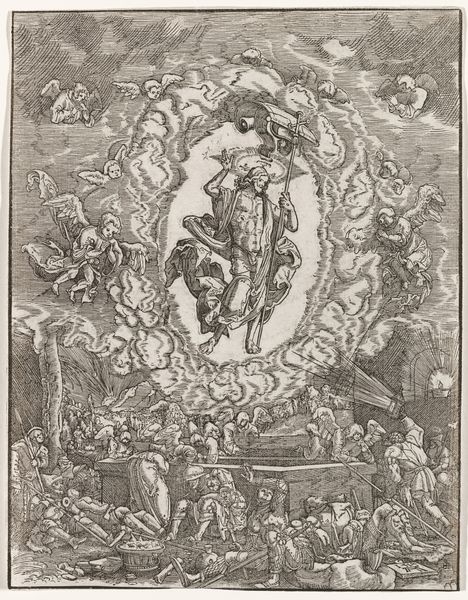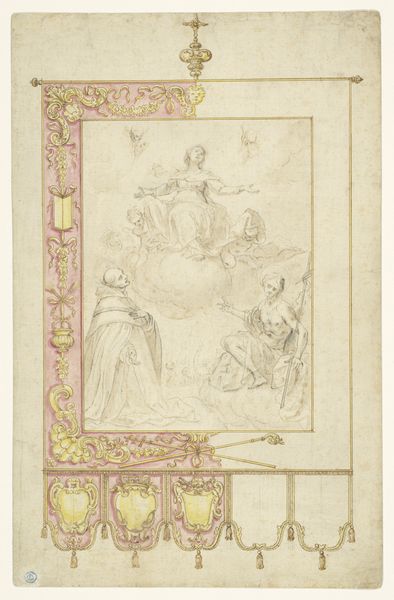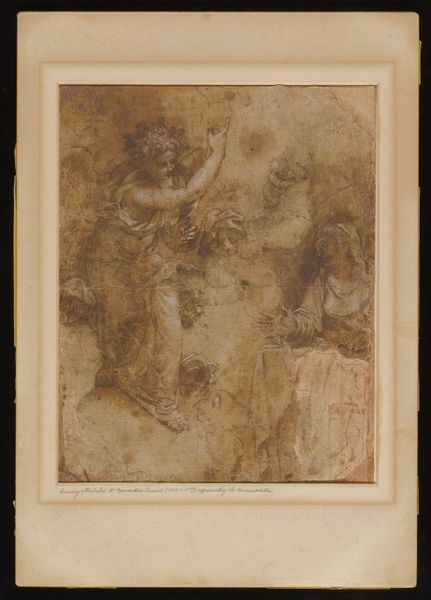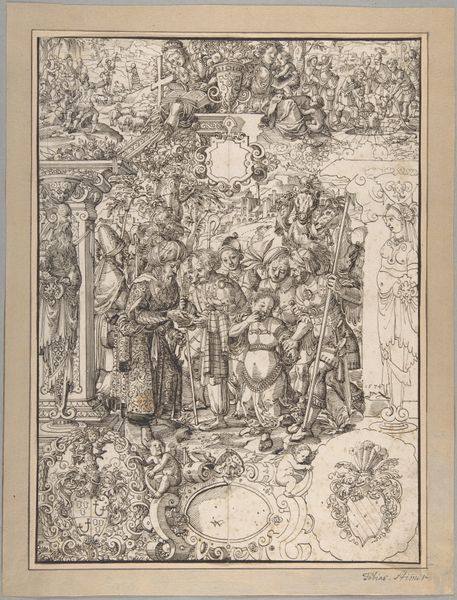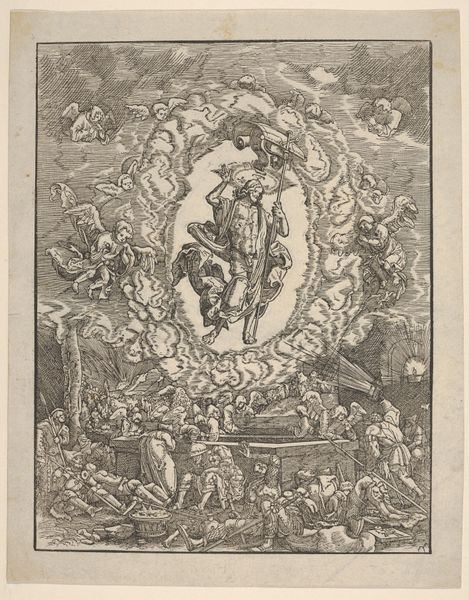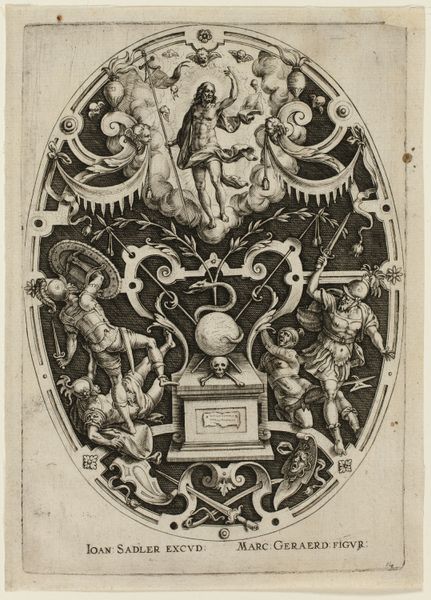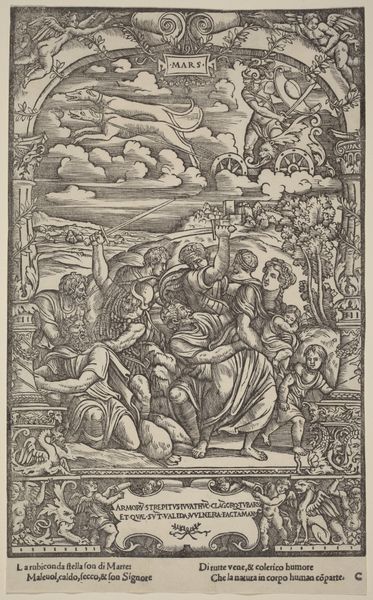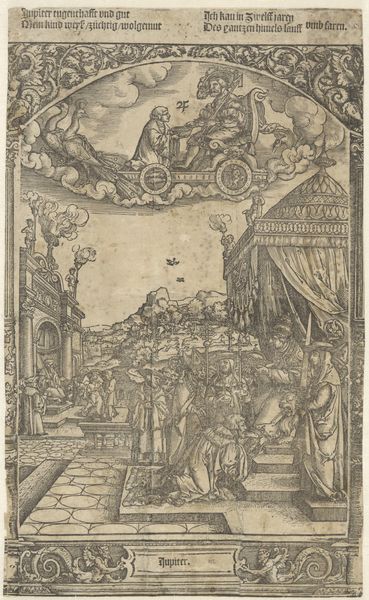
drawing, metal, relief, engraving
#
portrait
#
drawing
#
baroque
#
metal
#
stone
#
sculpture
#
relief
#
sculptural image
#
history-painting
#
engraving
Dimensions: height 30.9 cm, width 25.1 cm
Copyright: Rijks Museum: Open Domain
Abraham Drentwett created this wax relief of Prince Eugene of Savoy, sometime around the turn of the 18th century. The imagery is all about power. Eugene is framed in profile, a standard way to portray rulers. The military equipment, cannon, and armed soldier show him as a man of war. Above, the angel and the wreath suggest a divine blessing on his victories. This wasn't just a celebration of a military leader, it was also a statement about the role of art. Aristocrats like Eugene were increasingly interested in controlling their public image. They used portraits, medals, and public art to construct their image. This wax relief can be understood as an example of statecraft. The image promotes the idea of strong leadership and military might, legitimizing the power of the aristocracy at the time. To better understand this period, we could look at documents related to court life, military history, or art patronage. The image shows how art was deeply embedded in the social and political structures of the 18th century.
Comments
No comments
Be the first to comment and join the conversation on the ultimate creative platform.
